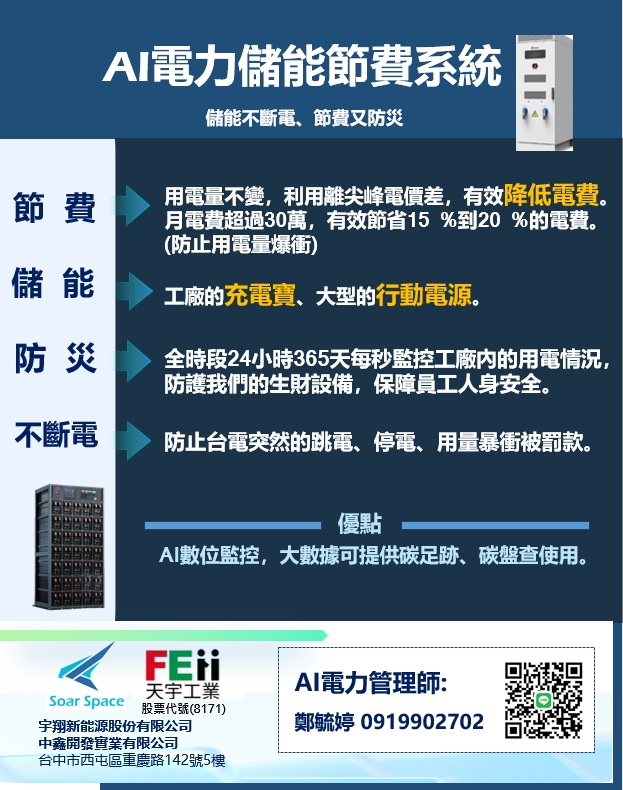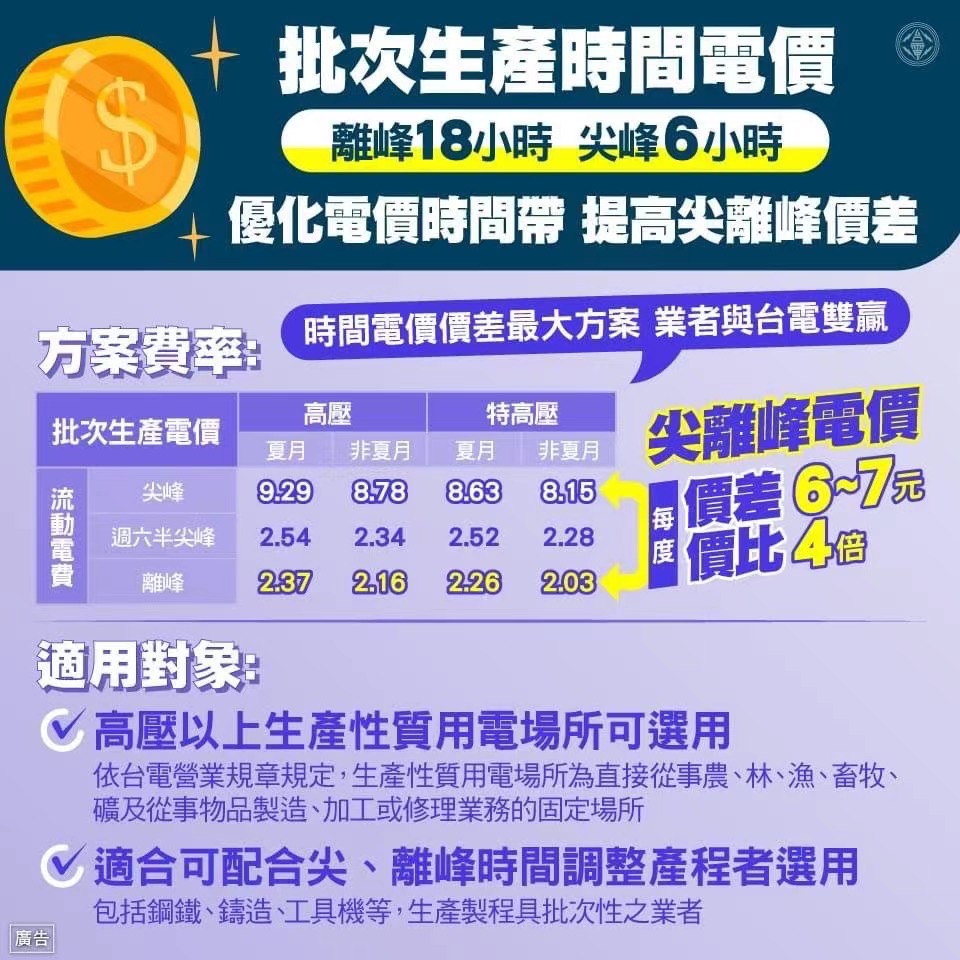We provide an integrated suite of intelligent energy solutions, centered on the core philosophy of "Uninterrupted Power, Cost Savings, and Disaster Prevention through Energy Storage." By combining the three pillars of "Domestic R&D, Taipower Certification, and AI Empowerment," we offer customized energy management products and services for clients of all sizes, from large corporations to individual households.
Our product model is primarily divided into the following three tiers:
1. The Core Intelligence: AI-EMS (Enterprise AI Energy Management Service)
This is the intelligent core of all our energy storage applications—a software-centric platform for energy planning and management. Designed specifically for enterprise clients, its goal is to transform power management from a reactive task into a proactive strategy.
-
Service Model:
- Simple Deployment & Power Health Check: We install data acquisition equipment quickly without needing to modify the client's existing switchboards.
- Consumption Model Creation: Using AI algorithms, we analyze the collected power data to build a predictive energy consumption model unique to the enterprise.
- Decision-Making Report Generation: We produce a "Corporate Power Health Check Report" which includes:
- Precise Contract Capacity: Recommends the most economical contract capacity with Taipower to avoid penalties for exceeding limits.
- Recommended Storage Capacity: Scientifically calculates the required energy storage system capacity for an optimal, non-wasteful investment.
- Projected ROI Analysis: Quantifies the estimated electricity savings and return on investment after implementation.
- Energy Generation & Efficiency Plan: Assesses the feasibility of adding solar power and suggests upgrades to high-efficiency equipment.
- Continuous Optimization & Diversified Applications: The system goes beyond analysis to actively control energy flow, enabling "peak shaving" (storing off-peak energy for use during peak hours). It also assists enterprises in participating in Taipower's programs like Demand Response and real-time ancillary services, turning the energy storage system from a capital expenditure into a revenue source.
-
Target Clients: Factories, office buildings, shopping malls, data centers, and other enterprise users with high electricity consumption and a need for power stability.
-
Core Value: Save on electricity bills, reduce labor costs, and avoid fines. Numerous clients report an average electricity bill reduction of 20% compared to the same period in the previous year after implementation.
2. Powerful Hardware: Modular Energy Storage Systems (by Scale)
Governed by the AI-EMS intelligent core, we provide hardware systems that comply with international safety regulations and Taipower standards to meet the needs of various applications.
A. Industrial & Grid-Scale: Containerized Energy Storage Systems (ESS)
For large-scale energy demands, we offer standardized, rapidly deployable containerized energy storage systems.
- Product Model:
- Integrated Container Design: High-energy-density lithium batteries (BESS), Power Conversion Systems (PCS), Battery Management Systems (BMS), Energy Management Systems (EMS), and fire suppression/cooling systems are all integrated into a standard container.
- Modularity and Scalability: Like building blocks, containers can be added to increase storage capacity (to kWh/MWh levels and beyond) based on client needs, offering immense flexibility.
- Target Clients / Application Scenarios:
- Grid Operators: For grid-scale peak shaving, valley filling, and frequency regulation.
- Renewable Energy Plants: To store solar or wind energy, smooth out intermittency, and provide a stable output.
- Large Industrial Parks / Science Parks: To establish microgrids or serve as a large-scale Uninterruptible Power Supply (UPS) for critical facilities.
B. Residential & Small Commercial: Home Energy Storage Systems
We have miniaturized our industrial-grade technology to allow individual households and small businesses to enjoy the benefits of energy independence.
- Product Model:
- All-in-One Home Unit: Resembling a home appliance, this unit contains all core components, including storage batteries, an inverter, and a charge controller.
- Smart Monitoring: Users can monitor energy generation, storage, and consumption in real-time via a mobile app or web portal.
- Flexible Integration: Can be used independently to save costs by leveraging time-of-use electricity rates, or combined with a solar PV system to maximize self-consumption of green energy.
- Target Clients / Application Scenarios:
- Residential Homes: To achieve energy self-sufficiency with solar panels and serve as a backup power source during outages.
- Small Businesses / Offices: To reduce commercial electricity costs and enhance the company's green energy profile.
- Remote or Off-Grid Areas: To solve problems of unstable power supply and provide reliable electricity.
Our product model is a deep integration of AI software services (AI-EMS) and high-quality hardware (various ESS). Clients can start with a simple "Power Health Check" to precisely understand their needs, then select the most suitable hardware scale to ultimately achieve:
- Optimized Cost-Effectiveness: Not just saving money, but also creating revenue by participating in the electricity market.
- Maximized Energy Security: From disaster prevention warnings to uninterrupted backup power, ensuring that operations and daily life are not affected.
- Trustworthy Domestic Production: 100% developed and manufactured in Taiwan, compliant with CNS national certification and Taipower regulations, free from cybersecurity risks, and proven by the strict standards of European, American, and Australian markets.
- Verifiable Sustainable Development: Providing verifiable data to help enterprises calculate their carbon footprint, reduce emissions, and achieve their ESG goals.
.jpg)



#AI Smart Energy Storage System
#Energy Storage System
#AI Energy Storage System
#energy storage system price
#Global energy storage market
#AI Energy Storage System TAIWAN


